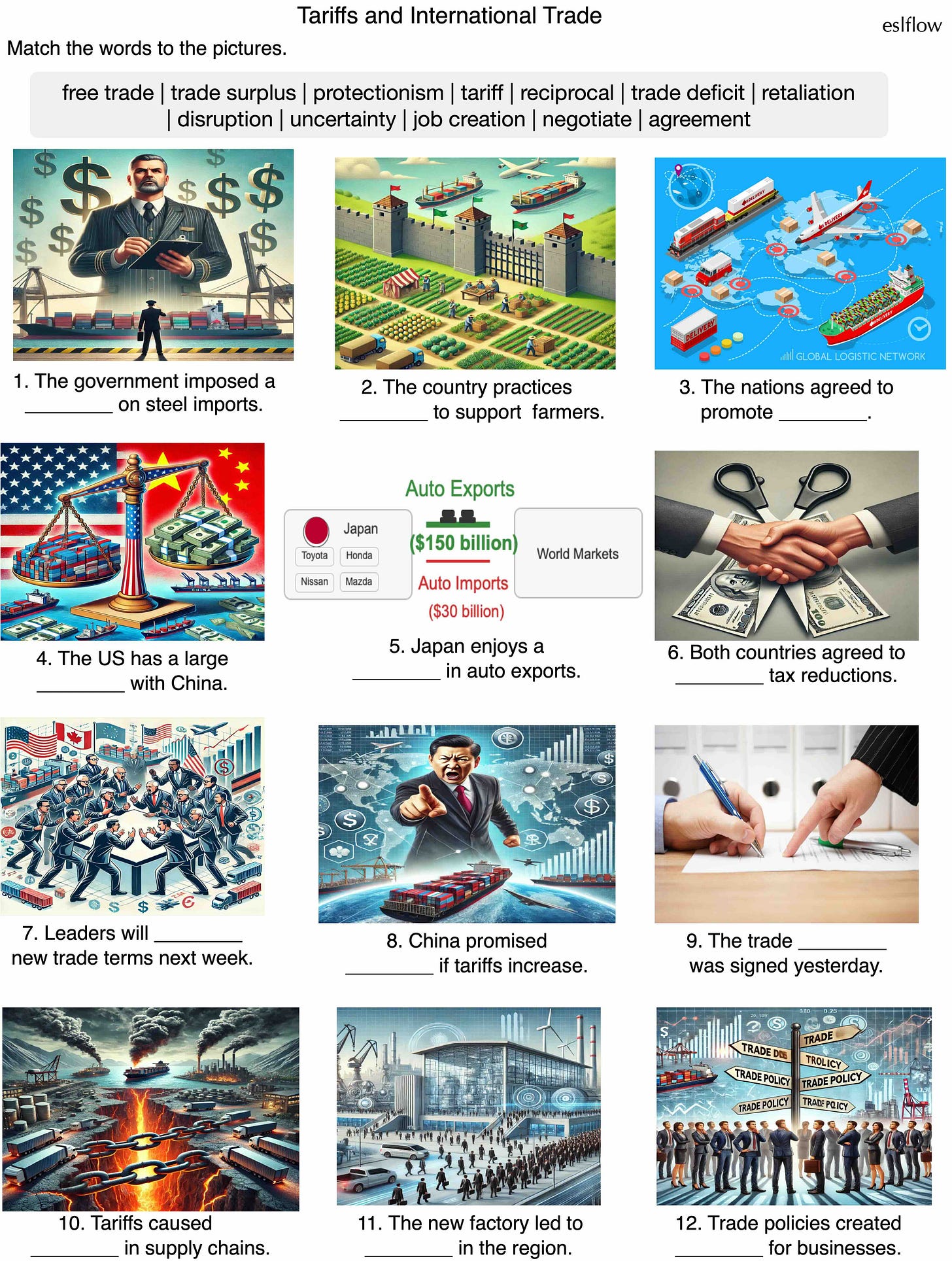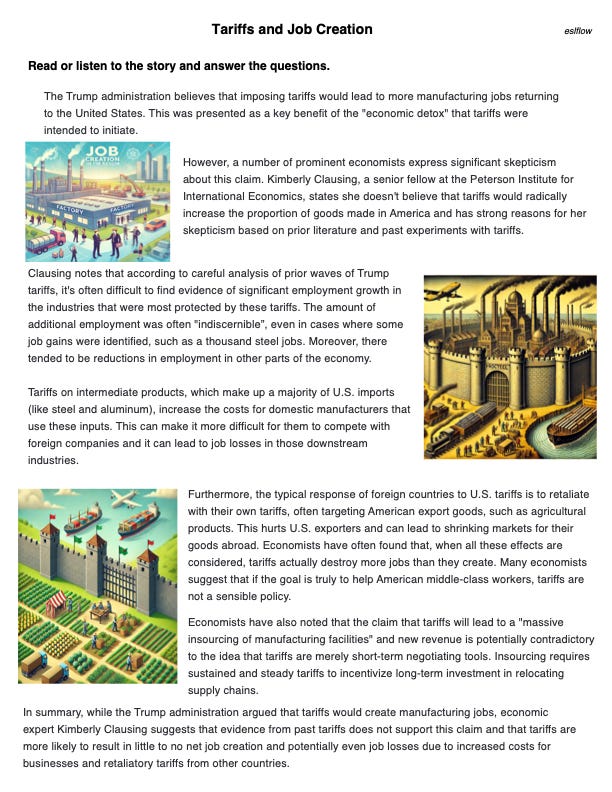Today's post content:
10 new tariff-related exercises
3 new describing trends and graphs exercises
2 listening exercises (tariffs)
1 video (tariffs vocabulary)
Download includes best of describing graphs/trends collection (20+ including video, audio and worksheets)
Paid subscribers have access to download the complete materials at the end of the post.
While the current news about tariffs might seem boring to some, it's actually a fascinating topic with its own special vocabulary. Not only that, it's an engaging topic as there are many different ideas about the possible impacts and consequences of tariffs. These exercises were created with reference to New York Times' Ezra Klein Show and The Daily Podcast:
Why Trump’s Tariffs Won’t Work
Elbows Up: Canada’s Response to Trump’s Trade War
Tariffs Visual Vocabulary
The topic of the moment is unquestionably tariffs. As news feeds fill with trade war developments and store prices reflect new import taxes, we find ourselves living in an economic narrative where tariffs play the leading role. By matching tariff terminology to relevant images, learners explore the vocabulary needed to discuss complex economic relationships that directly impact consumer prices, job opportunities, and product availability in their communities – making this topic both academically valuable and immediately relevant to their lives.
Tariffs and Job Creation
Do tariffs actually create jobs? This vocabulary, reading/listening and critical thinking lesson dives deeper into tariffs and challenges and engages students on a number of levels. Tariff vocabulary is expanded, with terms like "economic detox" and "intermediate products" that students must master to understand international trade discussions. However, the topic is also personal as it relates directly to students' future careers - whether they'll work in manufacturing, agriculture, or international business, trade policies will impact job opportunities and industry growth. Critical thinking is important too as students analyze competing economic perspectives from government officials and expert economists, evaluating ideas and evidence about job creation claims and weighing both intended and unintended consequences of trade barriers.
Tariffs: Critical Thinking
These critical thinking exercises encourage students to become trade policy advisors, weighing the disruption of supply chains against potential job creation, and considering how negotiation strategies influence international partnerships.
Describing Graphs and Trends
How do we talk about ups and downs in data? This worksheet helps students learn the exact words needed to describe changes shown in graphs and charts—a skill that matters in almost every modern workplace. Students match trend expressions to twelve different graphs covering topics they'll encounter in real life: smartphone sales, housing markets, consumer confidence, and more. The vocabulary focuses on practical terms for describing increases, decreases, stability, and fluctuations that appear daily in business reports, news articles, and workplace presentations.
Describing Trends: Personalized
This personalized worksheet helps ESL students connect trend vocabulary to their daily experiences, making abstract concepts immediately relevant and memorable. By transforming expressions like "peaked," "decreases sharply," and "remains steady" from technical terms into tools for describing personal patterns, learners are encouraged to develop natural fluency.






